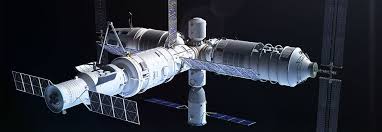
Breaking News
 Why Dual Engine Failure Changes Everything -- Louisville Crash Update
Why Dual Engine Failure Changes Everything -- Louisville Crash Update
 Transforming Storage Shelf / Workbench - Small Space Organization
Transforming Storage Shelf / Workbench - Small Space Organization
 Our 3-Step Strategy for a Stress-Free Pantry
Our 3-Step Strategy for a Stress-Free Pantry
 BEHIND THE DEEP STATE | The War on Farms
BEHIND THE DEEP STATE | The War on Farms
Top Tech News
 HUGE 32kWh LiFePO4 DIY Battery w/ 628Ah Cells! 90 Minute Build
HUGE 32kWh LiFePO4 DIY Battery w/ 628Ah Cells! 90 Minute Build
 What Has Bitcoin Become 17 Years After Satoshi Nakamoto Published The Whitepaper?
What Has Bitcoin Become 17 Years After Satoshi Nakamoto Published The Whitepaper?
 Japan just injected artificial blood into a human. No blood type needed. No refrigeration.
Japan just injected artificial blood into a human. No blood type needed. No refrigeration.
 The 6 Best LLM Tools To Run Models Locally
The 6 Best LLM Tools To Run Models Locally
 Testing My First Sodium-Ion Solar Battery
Testing My First Sodium-Ion Solar Battery
 A man once paralyzed from the waist down now stands on his own, not with machines or wires,...
A man once paralyzed from the waist down now stands on his own, not with machines or wires,...
 Review: Thumb-sized thermal camera turns your phone into a smart tool
Review: Thumb-sized thermal camera turns your phone into a smart tool
 Army To Bring Nuclear Microreactors To Its Bases By 2028
Army To Bring Nuclear Microreactors To Its Bases By 2028
 Nissan Says It's On Track For Solid-State Batteries That Double EV Range By 2028
Nissan Says It's On Track For Solid-State Batteries That Double EV Range By 2028
China reveals design for planned Tiangong 3 space station

The China National Space Administration (CNSA) presented several slides of the design of its future space station, called Tiangong 3—meaning "Heavenly Palace" in Chinese. The station is expected to be built between 2018 and 2022.
According to the released slides, the station's core module, "Tianhe 1" (which means "galaxy"), will include a laboratory with integrated modular racks for storing scientific equipment. It will also have five docking ports and a robotic arm.
image: http://www.spaceflightinsider.com/wp-content/uploads/2016/05/tianhe_blog_sina-655x179.jpg
A diagram of the Tianhe 1 module. Image Credit: aihangtian via blog.sina.cn
With a mass of about 24 tons (22 metric tons), this module will be 59 feet (18.1 meters) long and 14 feet (4.2 meters) in diameter. Tianhe 1 is expected to launch sometime in 2018, most likely atop a Long March 5 booster, and will serve as a docking hub for future modules and resupply spacecraft.
Tiangong 3 will have two science modules: "Wengtian" and "Mengtian". These modules are planned to be used for performing scientific research in microgravity. Both will be 47 feet (14.4 meters) long and will have the same maximum diameter and launch weight as the core module.
Popular Science reports Wengtian will be fitted with a set of internal modular racks for scientific missions. It will also have its own small robotic arm to assist taikonauts in conducting experiments out in the vacuum of space. The site noted that Mengtian will have a docking port for interfacing with spacecraft, capable of supporting other modules and spaceships for logistics and repair.
image: http://www.spaceflightinsider.com/wp-content/uploads/2016/05/wentian_sina_cn-655x198.jpg
A diagram of the Wengtain science module. Image Credit: aihangtian via blog.sina.cn
The science modules are scheduled to be sent to space in the 2020–2022 time frame.
"Two space labs will be launched later and dock with the core module, Tianhe 1," Wang Zhongyang, spokesman for the China Aerospace Science and Technology Corporation said in April. "The construction of the space station is expected to finish in 2022."

 Carbon based computers that run on iron
Carbon based computers that run on iron



